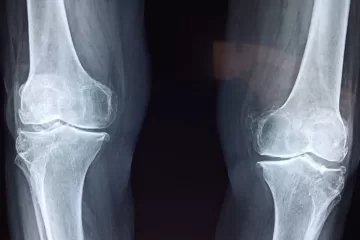Can Autism be confused with schizophrenia?
Published by Tony Attwood on
Can Autism be confused with schizophrenia?
The term autism was first used by the Swiss psychiatrist Eugen Bleuler in 1919 to describe a withdrawal from reality with a pathological predominance of inner life. The term autism was included within his description of dementia praecox, the original term for schizophrenia. In the first edition of The Diagnostic and Statistical Manual of Mental Disorders (American Psychiatric Association 1952), autism was classified as an expression of childhood schizophrenia. It was not until the third edition in 1980 that autism was conceptualised as an independent disorder. A recent meta-analysis has indicated that around 6% (range 4-12%) of autistic adults have a Schizophrenia Spectrum Disorder (SSD) (Marin et al., 2018), with a prevalence of SSD in the general population of 1.1% (Rossler et al., 2005).
The differential diagnosis is one of the most difficult and complex diagnostic challenges and requires a high level of expertise in both areas. Clinicians involved in diagnosing autism and schizophrenia often come from different backgrounds and use different diagnostic methods. Similarities between both disorders can lead to misdiagnosis and inappropriate treatment. This article will explore the resemblances and differences.
Screening instrument
A new screening questionnaire is currently being developed to differentiate between autism and schizotypal disorder (SD). The SchiZotypy Autism Questionnaire (ZAQ) has 134 items, and when the research is completed, it will have a cut-off score and contribute to more effective discrimination between autism and SD (Parvaiz et al. (2023).
Diagnostic criteria for schizophrenia
The diagnostic criteria for Schizophrenia, according to DSM 5 TR (APA, 2022), include delusions, hallucinations, disorganised speech and behaviour and diminished emotional expression or avolition.
Delusions
The idiosyncratic beliefs of an autistic person can be confused with the delusional ideas of a person who has schizophrenia. However, in schizophrenia, delusions do not follow logical reasoning, whereas in autism, the beliefs are based on logical reasoning that is easy to follow. Clinicians recognise that severe depression and other mood disorders, such as bipolar disorder and anxiety disorders, can sometimes lead to psychotic features and mood-congruent delusions (Ghaziuddin, 2005a); for example, a person with severe depression may develop auditory hallucinations that are related to the depression, for example, voices telling the person to kill themselves, but there can be a qualitative difference from the voices associated with schizophrenia.
We now have a cognitive model for the emergence of delusional beliefs in autistic adults (Abell & Hare, 2005). Fundamental to these beliefs are cognitive deficits in executive functions, autobiographical memory and Theory of Mind.
A characteristic of autism is having special interests or passions and cognitive rigidity. The interests may involve collecting objects or information, but some interests could be interpreted as indicating schizophrenia. We knew an autistic adult who had an intense interest in medieval church law and, due to his reading of obscure religious texts, made the logical decision that the current Pope was illegitimate. He was determined to travel to the Vatican to denounce the Pope based on the evidence he had carefully analysed and collated. There were no accompanying signs of schizophrenia, but he was admitted to a secure psychiatric hospital and discharged when he discovered a replacement interest in computer games.
One of the compensatory mechanisms for an autistic person, who may achieve limited social inclusion and acceptance, is to create a fantasy life that can include imaginary friends and imaginary worlds in which he or she is socially successful and popular. The contrast between the real and imaginary world can become quite acute during adolescence. Under extreme stress, the autistic adolescent may create a fantasy world that becomes not simply a mental sanctuary and source of enjoyment but a cause of concern to others, that the distinction between the fantasy world and reality is becoming blurred. A tendency to escape into one’s imagination as a compensatory mechanism can be interpreted as a delusional state of mind.
An autistic person may develop what appear to be signs of paranoia, potentially indicative of the delusions associated with schizophrenia, but this may be an understandable response to authentic aversive social experiences. Autistic children and adolescents encounter greater bullying and teasing than their peers. Once another child has deliberately tormented an autistic child, any subsequent confusing interaction with that non-autistic child can cause the autistic child to assume that the interaction was intentionally hostile. In addition, the extraordinary hearing abilities associated with autism can enable an autistic person to hear derogatory comments about them spoken at some distance or in another room, which are spoken with the assumption that their comments would be inaudible. Bullying and derogatory comments can eventually lead to long-term feelings of persecution and distrust and contribute to social withdrawal. The retreat to the safe sanctuary of a bedroom can resemble the social withdrawal associated with the prodromal stage of schizophrenia.
One of the concerns during a diagnostic assessment for schizophrenia in an autistic person is differentiating between the anticipated consequences of an impaired or delayed Theory of Mind and the paranoia and persecutory delusions associated with schizophrenia. A research study examined the potential link between impaired or delayed Theory of Mind and paranoia in young autistic adults (Blackshaw et al., 2001). An incident such as being ignored by a friend could be conceptualised in terms of the situation (he did not see you, was in a hurry, etc.), which uses the circumstances as an explanation, or it could be conceptualised in terms of his mental intentions (he did not want to talk to you, or he wanted to make you feel embarrassed or ignored). The study used a series of tests and questionnaires to measure the degree of impaired Theory of Mind and paranoia. The autistic participants in the study scored lower on tests of Theory of Mind and higher on measures of paranoia than non-autistic controls. However, an analysis of the results of the study found that the paranoia was due to impaired Theory of Mind abilities and was qualitatively different to the characteristics of paranoia observed in people with a diagnosis of schizophrenia. The paranoia was not a defence strategy, as occurs in schizophrenia, but due to confusion in understanding the subtleties of social interaction, intentions and social rules.
Hallucinations
Sensory sensitivity associated with autism can be misinterpreted as hallucinations (Marin et al., 2018). The Sensory Perception Questionnaire (SPQ) was designed to explore the sensory perception of autistic adults (Tavassoli et al., 2014), and the questionnaire includes items such as:
I would be able to hear the sound of a leaf blown by the wind on a quiet street.
I can hear electricity humming in the walls.
I would be able to hear the sound of a vacuum cleaner from any room in a two-story building.
I would be able to smell the smallest gas leak from anywhere in the house.
I would be the first to hear if there was a fly in the room.
I would be able to smell the difference between most men and women.
I can see dust particles in the air in most environments.
I would detect a new smell in my house instantly before anyone else.
Non-autistic individuals would not perceive these sensory experiences and could accuse an autistic person of experiencing a hallucination.
We have noted that some autistic children and adults tend to vocalise their thoughts, unaware of how confusing or annoying this can be to others. The thought vocalisation can occur as a means of problem-solving, with some adolescents stating that they can improve their thinking by talking to themselves or have difficulty ‘disengaging mind from mouth’ when thinking. Such speech may occur out of a social context; the content is often a replay of the day’s conversations to understand the various levels of meaning or as a rehearsal of what to say for some future occasion. When lonely, the autistic adolescent can talk aloud to an imaginary person or friend and is not necessarily engaged in a dialogue in response to an auditory hallucination.
We know that many autistic children and adults think in pictures (Grandin, 1995), and when we enquire whether such children have an inner, conversational voice to help them manage emotions or situations, they are often bewildered and state that they do not have an inner voice or conversation within themselves when thinking. This characteristic is probably due to a delay in the self-reflection aspects of Theory of Mind. Non-autistic children achieve this ability when they are about five years old. However, during adolescence, this attribute can ‘switch on’ for the first time for an autistic teenager who then reports having voices and conversations in his or her head. This could be interpreted as a sign of schizophrenia. It is essential to distinguish between an inner voice as a natural aspect of thought and problem-solving and the auditory hallucinations of schizophrenia.
Disorganised speech
Autism is associated with problems with the pragmatic and semantic aspects of language, such as conversational clarification and repair, which can include a tendency to switch topics that can confuse the other person (Paul et al., 2014). This characteristic could be interpreted as evidence of the speech disorder associated with schizophrenia. If in doubt as to what to say, the autistic person may change the topic to something they know about and would prefer to talk about and may not perceive how confusing this would be for their conversational partner.
Another problem with the semantic aspects of language that occurs with autistic individuals is making a literal interpretation. A psychiatrist may ask a question such as, ‘Do you hear voices?’ to which Wen Lawson, who is autistic, replied, ‘Yes’ – the correct answer based on a literal interpretation of the question (Lawson, 1998). He heard voices of people talking around him every day. His answer contributed to the psychiatrist’s opinion that he had schizophrenia.
Diminished emotional expression or avolition
Autism is associated with emotional dyskinesia, such that there may be limited facial expressions of emotions and being perceived by others as having a ‘wooden’ face (Attwood, 2015). There is also an association with alexithymia, which is a lack of words for emotions. These characteristics could contribute to the impression of diminished emotional expression. Avolition is the inability to initiate or sustain purposeful movement, and autism is associated with catatonia, which was originally recognised and described in schizophrenic patients (Shah, 2019).
Co-occurrence of schizophrenia and autism
Some of the characteristics of schizophrenia are central to the differential diagnosis, such as a later onset and a period of gradual deterioration before positive psychotic symptoms emerge. An exploration of early childhood may confirm that the characteristics considered as evidence of schizophrenia have been persistent throughout childhood and early adolescence.
The superficial similarities between some of the characteristics of autism and schizophrenia do not imply that an autistic person is ‘immune’ from schizophrenia. We have known autistic people who develop unequivocal signs of schizophrenia, which has been confirmed by research (Ghaziuddin, 2005a; Stahlberg et al., 2004). However, we need research on the most effective treatments for an autistic person who develops schizophrenia in terms of medication, psychological therapy and support and best practice guidelines (Foss-Feig et al., 2020).
In our extensive clinical experience, we have seen families with an autistic child who have a relative diagnosed with schizophrenia, an association confirmed in the research literature (Ghaziuddin, 2005b). In retrospect, we cannot be sure if the relative genuinely had schizophrenia or the characteristics of autism that resembled schizophrenia.
Before our current understanding of autism, an autistic adult with intellectual and language abilities within the normal range experiencing what would have been considered a ‘nervous breakdown’ would have been referred to a psychiatrist who would not have known about autism. They may have received a diagnosis of atypical or undifferentiated schizophrenia (Perlman, 2000). Anti-psychotic medication would not be as effective as expected and primarily act as sedation. Electro Convulsive Therapy (ECT) and even leucotomy may have been used for a patient whose signs of schizophrenia were not responding to antipsychotic medication in a psychiatric hospital.
Tony obtained his clinical qualifications during the last days of the large mental hospitals around London that accommodated thousands of long-term psychiatric patients. With hindsight, he recognises that some of the patients in the old institutions with a diagnosis of atypical schizophrenia would today be diagnosed as autistic. The diagnosis of schizophrenia was a diagnostic label to justify admission and inpatient care (Schalkwyk et al., 2015). If such individuals are now residents in community psychiatric services, they may benefit from a re-assessment by a specialist in autistic adults.
A recent study of the prevalence of autistic patients in American psychiatric hospitals found a prevalence of 10%; almost all were diagnosed as having schizophrenia (Mandell et al., 2012). Psychiatric hospitals are not ‘autism-friendly’ in terms of staff knowledge of autism and adapting the environment to accommodate aspects of autism, such as sensory sensitivity, need for solitude and personal space and being emotionally sensitive to the distress of other patients.
We are concerned about the limited training and supervised clinical experience of adult psychiatrists in the diagnosis of autism. This is particularly relevant when considering the high level of autism associated with a range of psychiatric disorders, such as depression, anxiety, substance abuse, eating disorders and schizophrenia. A recent study in Sweden screened new patients referred to an adult psychiatric outpatient clinic for autism. The prevalence of autism in this population was estimated as at least 19% and possibly up to 35%, two-thirds of whom had never been previously assessed for autism (Nyrenius et al. (2022).
Conclusion
Autism was originally conceptualised as an expression of schizophrenia and subsequently recognised as a distinct and separate condition. However, there are aspects of autism that could be confused with schizophrenia, and we must ensure that clinicians are trained and experienced in the differential diagnosis.
References
Abell and Hare (2005) Autism 9
American Psychiatric Association The Diagnostic and Statistical Manual of Mental Disorders (1952, 1980 and 2022)
Attwood (2015) The Complete Guide to Asperger’s Syndrome London, Jessica Kingsley Publishers.
Blackshaw et al. (2001). ‘Theory of Mind, causal attribution and paranoia in Asperger syndrome.’ Autism 5,147-163
Bleuler, (1911) dementia praecox oder Gruppe der Schizophrenien. Handbuch Der Psychiatrie.
Foss-Feig et al., (2020) Schizophrenia and other Psychotic Disorders in Autism Spectrum Disorder, In White, Maddox and Mazefsky (Eds) The Oxford Handbook of Autism and Co-Occurring Psychiatric Conditions, Oxford, Oxford University Press
Lawson, W. (1998) Life Behind Glass: A personal account of Autism Spectrum Disorder. London: Jessica Kingsley Publishers.
Ghaziuddin, M. (2005a). Mental Health Aspects of Autism and Asperger Syndrome. London: Jessica Kingsley Publishers.
Ghaziuddin, M. (2005b). ‘A family history study of Asperger syndrome.’ Journal of Autism and Developmental Disorders 35,
Grandin (1995) Thinking in Pictures New York, Doubleday.
Mandell et al. (2012) Autism 16.
Marin et al. (2018). Prevalence of schizophrenia spectrum disorders in average-IQ adults with autism spectrum disorder. Journal of Autism and Developmental Disorders 48
Nyrenius et al. (2022). Journal of Autism and Developmental Disorders 52.
Parvaiz et al. (2023). BMC Psychiatry 23
Paul et al. (2014). Communication in Asperger’s syndrome. In: Asperger’s syndrome: Assessing and Treating High-Functioning Autism Spectrum Disorders McParland, Klin and Volkmar (Eds) The Guilford Press, New York.
Perlman, L. (2000). ‘Adults with Asperger disorder misdiagnosed as schizophrenic.’ Professional Psychology: Research and Practice 31,
Rossler et al. (2005). European Neuropsychopharmacology 15.
Shah (2019) Catatonia, Shutdown and Breakdown in Autism London: Jessica Kingsley Publishers.
Schalkwyk et al. (2015). Journal of Autism and Developmental Disorders 45.
Stahlberg et al. (2004) ‘Bipolar disorder, schizophrenia and other psychotic disorders in adults with childhood-onset AD/HD and/or autism spectrum disorders.’ Journal of Neural Transmission 111, 891-902.
Tantam, D. (2000) ‘Adolescence and adulthood of individuals with Asperger Syndrome.’ In A. Klin, F. Volkmar and S. Sparrow (eds) Asperger Syndrome. New York: Guilford Press.
Tavassoli, Hoekstra and Baron-Cohen (2014) Molecular Autism 5:29


